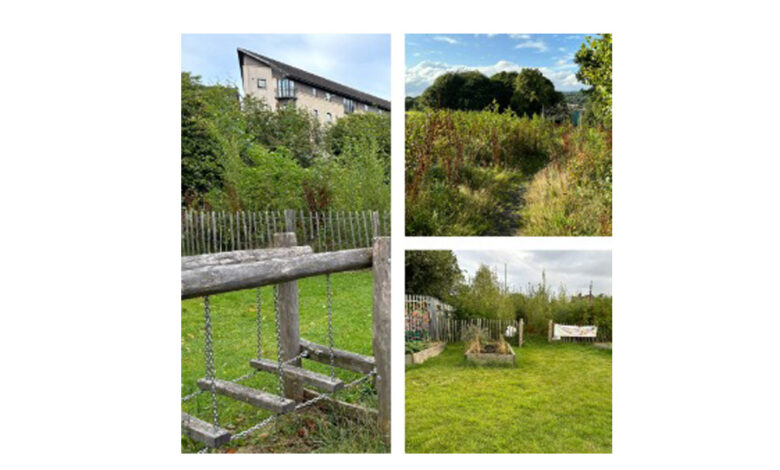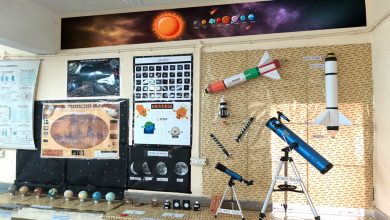Wee Forests need a big push

People visiting green spaces known as Wee Forests are improving their connections with nature and their community, new research carried out by the University of Dundee shows.
But more effort to promote the use of these spaces and resources to support visits is needed, say researchers from the University’s Botanic Garden and School of Humanities, Social Sciences and Law.
Led by NatureScot and supported by £500k of Scottish Government funding, a pilot Wee Forest programme saw 20 urban forests set up across the country in 2021 and 2022, including in Aberdeen, Dundee, Edinburgh and Glasgow.
Part of the global family of ‘Tiny Forests’, these tennis court-sized areas are fast growing and densely planted with native species, resulting in a rich and biodiverse woodland area.
Four were planted across Dundee, in Stobswell, Douglas, Kirkton and Lochee.
The forests were intentionally created near to primary schools lacking in nearby green spaces to support nature-based solutions to social and environmental issues in areas with high levels of deprivation.
The aim was to improve the local environment and biodiversity and become a potential resource for learning and play.
The University’s Botanic Garden was the project’s local delivery partner and academics have conducted research, initiated and funded by NatureScot, to discover the ways in which these sites in Dundee are used.
As part of their study, the research team mapped out the proximity of Wee Forests and other green space in relation to Dundee’s 33 primary schools.
They found six schools within a 20-minute walk of a Wee Forest, a further two schools are within a 25-minute walk, and 25 schools are more than a 25-minute walk.
In relation to other local green spaces, 23 schools are within a 20-minute walk, four schools within a 25-minute walk, while six primary schools further than a 25-minute walk.
The work showed that local green spaces and Wee Forests are used regularly by two and monthly by an additional two of the 12 primary schools who responded to the survey. The remaining schools used these spaces every 6 months or less.
Dr Kumara Ward, research lead at the Division of Education and Society, part of the University’s School of Humanities, Social Sciences and Law led the study.
She said, “A few schools made a real effort to get out once a month but, in reality, few got out every month.
“We found many similar barriers across lots of the schools – curriculum restraints, a lack of curriculum time and issues in relation to supervision ratios required for an out of school visit.
“Some schools managed outdoor walks in smaller groups of children of varying ages to allow greater ratios, for example House groups.
“Those who had used these vertical grouping methods spoke of the added benefits that brought in older children supporting the younger ones.”
The report makes a number of recommendations to target these common barriers including planting more Wee Forests and engage green liaison officers to promote and support visits.
Promote educational resources to assist understanding and encourage engagement with the Wee Forests and local green spaces are also recommended.
A recommendation for the local authority to develop guidelines to support schools in addressing the barriers related to curriculum time is also made within the report.
Kumara said, “The benefits of children using outdoor space are well known. It’s good for their health and wellbeing in so many ways.
“These visits are restorative and they promote physical exercise, connecting with nature, learning about plants and insects. There are social benefits in mixing with other children and they help develop a sense of place, as children get to know their community.”
The study also noted that one of the Wee Forests was used often for community groups, including family sessions.
Kumara added, “What we noticed from those who use the Wee Forests, is that they seem to promote connections between those who are involved in other green initiatives such as community gardens, allotments and community stewardship of other wild spaces.
“They seem to be an important part of that community and can support people to connect with other community initiatives.”
NatureScot’s Outdoor Learning Adviser, Penny Martin, said, “We’re pleased to hear Wee Forests are bringing benefits to the local communities who use them, and we welcome all efforts to make sure children and young people can enjoy these special places too.
“Research shows that when people have opportunities to connect with nature and get involved in outdoor learning, such as those available through Wee Forests, they develop a stronger appreciation of nature, and we’re keen to encourage more of this.”
The full report can be read on the NatureScot website.




